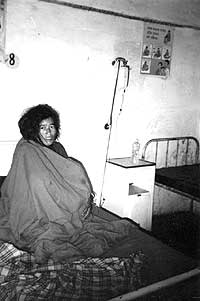 A new report from the Panos Institute, London, titled Birth rights: new approaches to safe motherhood, highlights the fact that since 1987, when an International Safe Motherhood Initiative was adopted, there has been little evidence of significant reductions in the number of women dying globally. The report, released in the run-up to World Human Rights Day on 10 December, gives out some grim figures:
A new report from the Panos Institute, London, titled Birth rights: new approaches to safe motherhood, highlights the fact that since 1987, when an International Safe Motherhood Initiative was adopted, there has been little evidence of significant reductions in the number of women dying globally. The report, released in the run-up to World Human Rights Day on 10 December, gives out some grim figures: . For every woman who dies of maternal causes in developed countries, 99 will die in the developing world
. The greatest risks of maternal death are faced by women in sub-Saharan Africa
. Across regions, lifetime risks of maternal death vary from a low of 1 in 4,000 in Northern Europe to a high of 1 in 16 in sub-Saharan Africa and 1 in 12 in East and West Africa
. In south-east Asia the lifetime risk of death is 1 in 55, in the Caribbean 1 in 75 and in South America 1 in 140
. The World Bank has estimated that the financial cost of basic maternal and newborn health services is, on average, $3 per person per year in developing countries; maternal health services alone could cost as little as $2 per person
. Each year more than 525,000 women die from complications of pregnancy and childbirth, and over 50 million experience pregnancy-related complications, 15 million of which lead to long-term illness or disability
. Maternal deaths are second only to deaths from AIDS
The report cites a number of factors that contribute to these deaths. One major reason for maternal deaths is that maternity facilities are under-resourced-local experts said in a study of 49 developing counties that almost half of maternity services would not be able to carry out one or more of the life-saving procedures they are meant to offer. Many countries also have practices enshrined in law and culture that inhibit women's chances of surviving pregnancy and childbirth. Early marriage, for example, can lead to childbearing before physical development is complete. Lack of access to safe, legal abortion and advice is another example. This has recently become harder in many parts of the world as a result of the so-called gag rule. The rule requires organisations that receive US funding for family planning to refrain from advocating for changes in abortion laws, or except in limited circumstances, providing abortion information, counselling or services, even with their own funds. The impact in many developing countries has been immediate. In Nepal, where 1 in 10 women die from pregnancy-related causes-approximately half from unsafe abortion-the Family Planning Association of Nepal (FPAN) has had to relinquish a relationship with USAID which had lasted 26 years. "If I were to accept the restricted US funds," said FPAN director general, Dr Nirmal K Bista, "I would be prevented from speaking in my own country to my own government about a healthcare crisis I know firsthand."
The current target of the International Safe Motherhood Initiative is a 75 percent reduction in deaths from 1990 levels by 2015. "This target is achievable," says Judy Mirsky, author of the report. "But governments must be prepared to implement the necessary changes in their laws and policies and to improve maternity services for all women."


